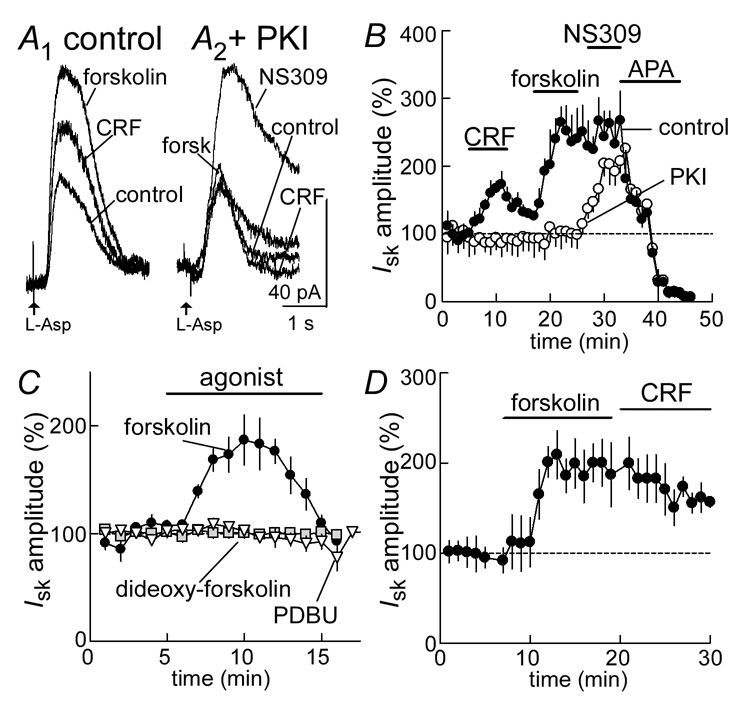Figure 2.
The CRF-potentiation of metabotropic glutamate receptor (mGluR)-induced current is mediated by adenylate cyclase and PKA. A1 (left side), raw traces of the current induced by iontophoretic application of aspartate (L-Asp) in control, in the presence of CRF (300 nM) and in the presence of forskolin (3 µM). A2 (right side), raw traces taken from an experiment where the pseudo-substrate blocker PKI (1 mM) was included in the internal solution. The aspartate induced current was not changed by either CRF or forskolin, but was increased by NS308 (10 µM), a stabilizer of sK channels. B, summarized results showing in control the time course of the potentiation of the aspartate-evoked current by CRF (n=14) and forskolin (n=9). Inclusion of PKI in the internal solution blocked this potentiation (CRF: n=8; forskolin: n=8). All currents were inhibited by the sK channel antagonist, apamin (APA, 100 nM). C, summarized results showing the facilitation of the aspartate-induced current by forskolin (3 µM, n=8), but not the inactive analog dideoxy-forskolin (3 µM, n=5) or the PKC activating phorbol ester, PDBU (300 nM, n=6). D, Summarized result showing the increase in aspartate induced current caused by forskolin (3 µM) and the occlusion of an increase induced by CRF (300 nM, n=6).

